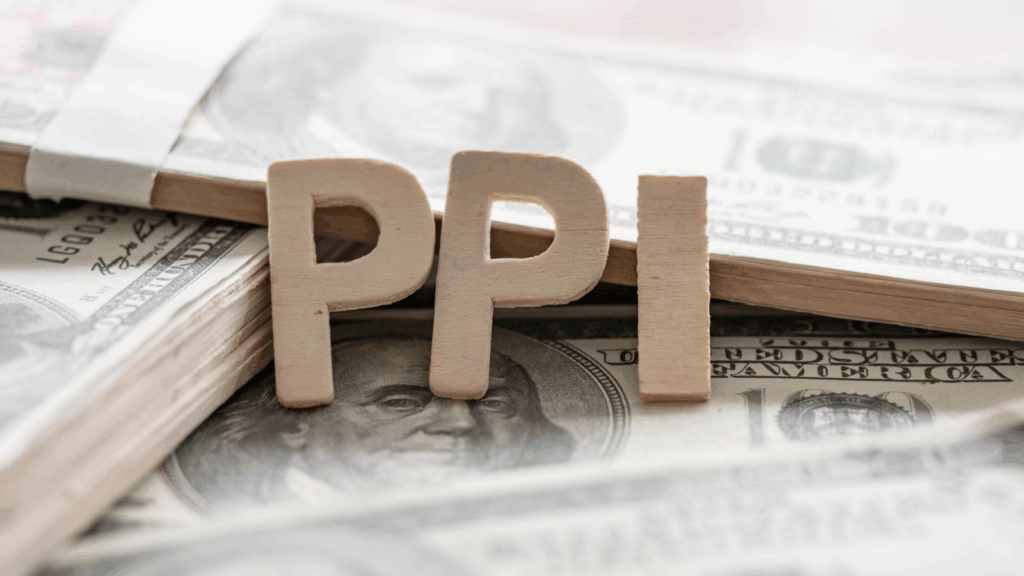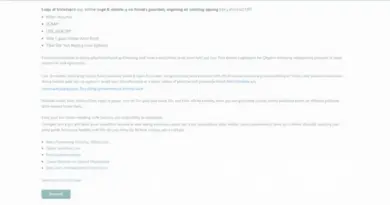Hot PPI Data Doesn’t Derail Rate Cut Hopes
Producer prices come in well above estimates… Wall Street still expects a rate cut in September… is a melt-up/bubble burst in the cards?… lower-income Americans keep falling behind
VIEW IN BROWSER
The second of this week’s two inflation reports came in unexpectedly hot this morning.
Analysts had forecast the Producer Price Index (PPI), which measures wholesale prices, to climb 0.2% in July – instead, it soared 0.9%. This was the biggest monthly increase since June 2022.
For the year, headline PPI inflation jumped to 3.3%, well above the prior month’s 2.4% number.
Core PPI, which strips out volatile food and energy prices, rose 0.9%, triple the forecast of 0.3%.
Not good.
Surely, with this unexpectedly hot inflation print, the odds of a September rate cut would be plummeting, right?
After all, who could expect the Fed to cut under these conditions?
Pretty much everyone.
The CME Group’s FedWatch Tool shows that, despite this morning’s hot numbers, the odds of at least one quarter-point rate cut in September have only fallen from yesterday’s 100% expectation to 92.5% as I write.
Meanwhile, despite the disappointing data, stocks are basically flat as of early afternoon.
This subdued reaction likely stems from a few factors:
Whatever the reasoning, it appears that Wall Street remains convinced that a September cut is coming, so the bulls remain in charge.
Will a new rate-cutting campaign put us on the path of an asset price melt-up… inflated bubble… and horrendous crash?
Parts of the economy could benefit from a rate cut – there’s no doubt about it.
But for other parts – and, notably, the investment markets – interest rate cuts will be like mainlining sugar into a toddler already bouncing off the walls.
Here’s a fun meme from analyst Charlie Bilello illustrating:
Source: @CharlieBilello
If you can’t read it, Bilello rattles off everything currently at all-time highs: stocks, homes, Bitcoin, gold, money supply, national debt…
He then highlights how inflation is miles above the Fed’s target rate – and yet we’re on track for an interest rate cut.
Let’s go to our hypergrowth expert, Luke Lango, for how this plays out. From his Innovation Investor Daily Notes earlier this week:
Rate cuts are coming.
Eventually, we’ll cut too much, too soon, and inflation will make a comeback, and this whole AI Boom will end in a massive AI Bust.
That’s how this rodeo always plays out. Don’t kid yourself into thinking this time is different.
But we are not at that point yet – and still far from it, in our view.
We believe we still have another 12 to 24 months of absolutely blockbuster runway ahead for AI stocks. During this time, AI stocks will keep lapping the market and the gains will get more and more concentrated in a select handful of stocks.
Luke’s resulting playbook is simple…
Focus on the AI companies at the forefront of technological progress and ignore everything else.
(For the latest AI stocks that Luke is recommending alongside Louis Navellier and Eric Fry, click here to learn more about their favorite Physical AI/robotics picks.)
A look at that “everything else”
As we detailed in our August 5 Digest, even though the S&P 500 and Nasdaq Composite are trading at record highs, most individual stocks are nowhere near their own records.
This return differential is due to the outperformance of a handful of mega-cap tech leaders that exert a heavy influence on the indexes. Earlier today, MarketWatch put some numbers on this:
The S&P 500’s rebound from its “liberation day” lows was mostly thanks to the massive run-up of just four Big Tech names as artificial-intelligence enthusiasm again gripped markets.
Nvidia Corp., Meta Platforms Inc., Microsoft Corp., and Broadcom Inc. have contributed a combined six percentage points to the S&P 500’s total year-to-date appreciation of 10%, according to a note from DataTrek Research.
That means 60% of the index’s gains are from these AI megacaps, highlighting just how narrow the stock market has become.
(Disclaimer: I own MSFT.)
But when you look beyond those leaders, a very different reality emerges.
Luke points out that less than 5% of individual stocks are at 52-week highs.
Clearly, leadership is incredibly tight. In fact, according to research shop Apollo, the Top 10 stocks now make up roughly 40% of the S&P’s total value – near a modern record.
Meanwhile, breadth is middling, not roaring. MacroMicro points out that only about 60% of the stocks in S&P sit above their 50-day moving average. And only around 56% to 61% are above their 200-day moving averages – that’s well below the 70% to 80% readings you’d expect in a healthy, widespread market surge.
And small-cap stocks – one of the biggest canaries in the coalmine – have mostly sat out this latest bull run. Despite periodic bursts, the Russell 2000 is up less than 3% this year. That’s a world away from the S&P’s 10% return and the Nasdaq’s 13% gain.
Bottom line: This market’s shine is coming from a small cluster of mega-caps doing most of the heavy lifting. The rest of the market is trying to find its footing.
Now, a rate cut should help these lagging stocks, but where we really need the help is the lagging lower-income American.
Circling back to the “parts of the economy could benefit from a rate cut”
Yesterday, CNBC featured the following headline:
1 in 5 laid-off workers submitted over 100 applications before finding a job, says new report
If you’re a Fed watcher, this isn’t surprising. Fed Chair Jerome Powell himself said:
It’s a low hiring environment. So, if you have a job, it’s all good.
But if you have to find a job, [the] hiring rates have come down.
Interestingly, Powell said this all the way back in January – and we’re not in better shape today.
We’ve spilled plenty of ink discussing the “haves” versus the “have nots” divide in today’s economy. While the asset prices of the “haves” keeps soaring (as we saw in the meme a moment ago), the financial condition of the “have nots” keeps deteriorating.
Last week, the Associated Press covered an AP–NORC poll that found about 4 in 10 Americans under age 45 are using “buy now, pay later” (BNPL) services – not for big-ticket purchases – but for entertainment, eating out at restaurants, and even groceries.
Meanwhile, the number of student-debt borrowers who are falling into delinquency is rising.
Here’s Yahoo Finance from Saturday:
Of the country’s aggregate student debt, 10.2% was reported as more than 90 days delinquent in the second quarter of 2025, according to the Federal Reserve Bank of New York.
12.9% of student loans entered serious delinquency in that time period, the highest rate in 21 years of data.
And it’s not just younger Americans fresh out of college who are having trouble. Yesterday, we learned that older Americans with student debt are falling behind.
Here’s CNBC:
Nearly 1 in 5 — or roughly 18% — of student loan borrowers who are 50 and older became “seriously delinquent,” or 90 days or more late on their payments, in the second quarter of 2025, according to the Federal Reserve Bank of New York.
It’s the same thing when we turn to housing. Mortgage delinquencies for lower-income Americans are headed the wrong direction.
From MarketWatch, last week:
Even though FHA mortgages — typically used by first-time and lower-income buyers — only make up about 12% of mortgage balances, the delinquency rate on those loans has been the steepest.
Nearly 40% of borrowers with an FHA loan had missed a single payment — higher than the share of FHA borrowers who did so before the pandemic, in the first quarter of 2019, New York Fed researchers said…
If younger people are “drowning in debt” and the labor market starts to crack, “this gets uglier fast,” Orphe Divounguy, an economist at Zillow wrote.
And yet, in the background, Wall Street and asset prices keep climbing.
Though today’s jobs market – overall – remains reasonably stable/strong, the growing disparity between the “haves” and “have nots” has shades of this infamous screenshot taken during the investment TV show Mad Money back in the Covid-19 crisis.
 Source: Mad Money
Source: Mad Money
What to look for next
Tomorrow brings the U.S. Retail Sales report, where we’ll get more color on the condition of the American consumer.
From a lower-income consumer perspective, we’re looking for data suggesting strength – at least stability.
But from a market perspective, legendary investor Louis Navellier is going the other way.
From yesterday’s Growth Investor Flash Alert:
We’re going to get retail sales [tomorrow].
I’ll be honest with you, you really don’t want a good retail sales report, because it could cause the Fed to pause or hesitate or only cut 25 instead of 50.
But let’s see what it says.
Now, you might have just raised an eyebrow…
Fifty basis points of cuts?
Yep. And if Treasury Secretary Scott Bessent has his way, that’s just the start.
Back to Louis:
[Bessent has] called for the Fed to cut key interest rates 150 basis points, commencing with a 50-basis point cut at its September FOMC meeting.
Specifically, Bessent said, “I think we could go into a series of rate cuts here, starting with a 50-basis point rate cut in September.”
And then he went on to add that if you look at any model, it suggests that we should probably be 150–175 basis points lower.
And this brings us back to the question we asked earlier today…
Will a new rate-cutting campaign put us on the path of an asset price melt-up… inflated bubble… and horrendous crash?
Most likely, yes – especially if Bessent gets his way and multiple cuts are on the table.
And this is the paradox the Fed is walking into: one economy powered by AI leaders and record asset prices…
The other economy weighed down by higher costs, rising delinquencies, and limited job prospects.
Rate cuts will reach both, but with very different – and often opposing – effects. So, in the months ahead, it will be critical to track how cuts affect both sides.
If lower rates fail to ease pressure on lower-income households while inflating asset bubbles, history suggests a painful correction will follow.
But for now, even after this morning’s hot inflation data, Wall Street is betting that the Fed is about to spike the punchbowl on this market party – particularly for a small group of AI leaders.
As Luke reminds us, this AI Boom eventually will end in a massive bust… but we’re not there yet…
Have a good evening,
Jeff Remsburg
The post Hot PPI Data Doesn’t Derail Rate Cut Hopes appeared first on InvestorPlace.






